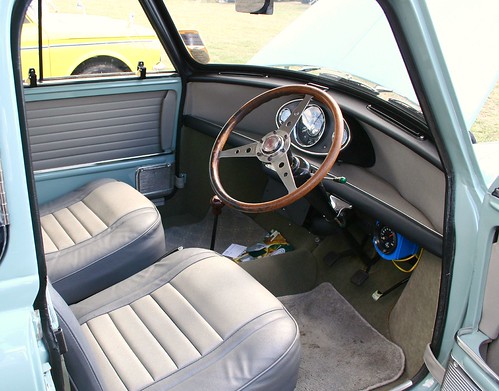Have any of you noticed how enormous the dashboards fitted to modern cars have become? Where 10 years ago you could sit in the driver’s seat of your car and easily reach out and touch the windscreen, this simple manoeuvre is now impossible in plenty of new cars.
This unusual characteristic of modern vehicle design has become popular for what I believe to be the following reasons:
Renault Scenic interior
- - Acres of elongated dashboard together with larger windscreens and thicker A-pillars are simply a contemporary design feature and perceived as very “now” and stylish.
< - Far more extensive and complicated safety features and especially the adoption of airbags are better integrated into a large dashboard design. Also, drivers are now positioned a lot further from the windscreen than before and this makes sense from an increased safety perspective.
All of which is wonderful in theory. A swoopy dashboard with curves in all the right places, a multitude of airbags and plenty of buttons to touch makes the modern car interior a treat for both the family man and the self-confessed technocrat.
However, UK-based WhatCar magazine ran what I believe to be an extremely underrated car safety study in 2003. They termed it the “visibility test” and they tested all the most popular cars from all segments of the market to determine how easy they are to see out of from the driver’s seat.
The results were quite shocking. MPVs like those from VW and Opel faired especially poorly, and these “mom’s taxis” are known for their large dashboard / thick A-pillar design.
Take a look at the picture of this recently-replaced Honda Jazz and one can see just how expansive the dash is. It had the second worst score in the survey and obstructed a significant portion of the driver’s sight on each side with those obtrusive A-pillars.
Even the tiny “quarterlights” (those miniscule non-opening windows fitted to the Jazz and lodged between the rear-view mirrors and windscreen) could do little to alleviate the lack of forward-vision.
I’ve driven a Jazz and I currently drive a previous-generation Ford Fiesta and can vouch for the inconvenience of having to stretch forward when going around certain corners to see clearly. It’s a problem that simply didn’t exist in the huge ’91 Toyota Cressida I used to drive!
It's a phenomenon worthy of consideration; has safety technology and subsequent changes to design become too smart for its own good?
Well, consider the Mini Cooper. WhatCar tests confirmed that Mr. Bean’s version offers an extra 10m² of exterior visibility compared with the 6-speed, supercharged, two-tone beast I would love to drive. Admittedly, WhatCar ran these tests based on the 2003 Cooper but with the 2009’s design having hardly changed, one can expect much of the same. This is despite the modern Mini's fairly shallow dashboard which indicates that visibility is badly affected by those thick A-pillars.
New Mini interior
What all this means is that the 2009 Mini Cooper looks and protects you a million times better than the one that became an icon in the ‘60s, but the old one gave you a far better chance of spotting a potential hazard and avoiding an accident in the first place!
Old Mini interior




No comments:
Post a Comment